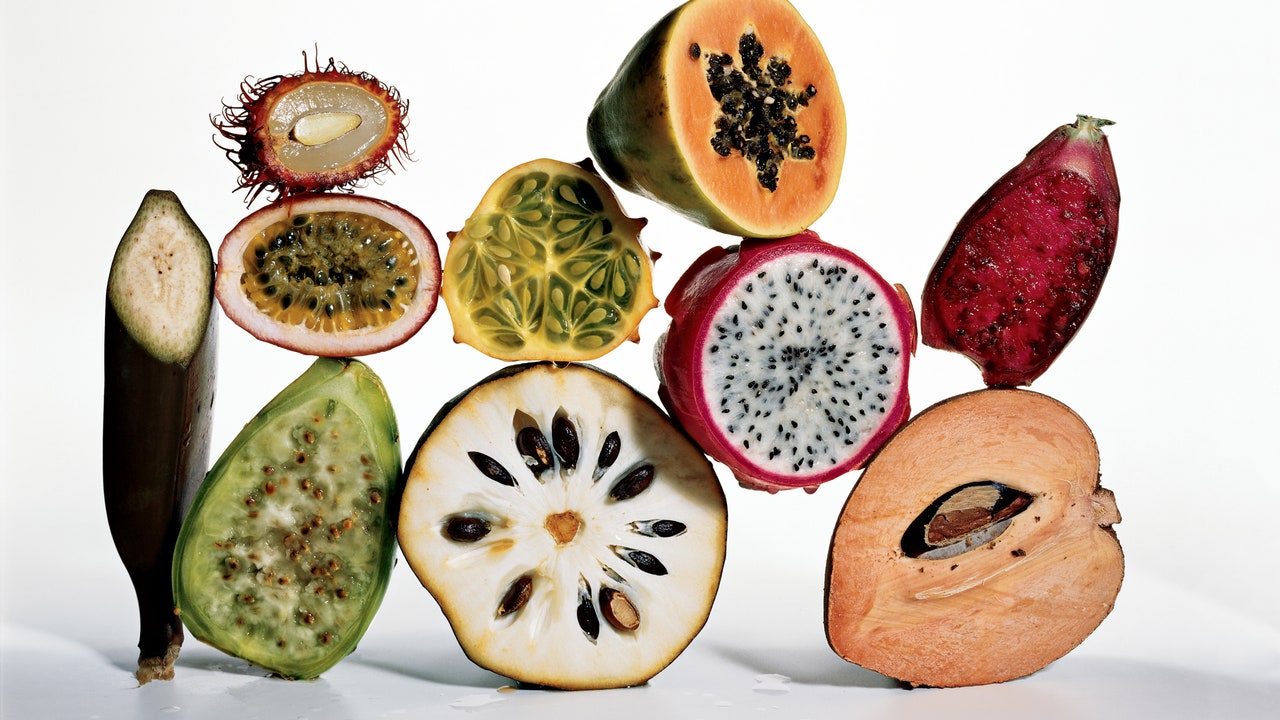Breakfast matters, says Dr Leeming, because if you eliminate a whole meal from your day, you’ll find it hard to reach that golden 30g quota. “Studies show that those who skip breakfast tend to have lower fiber intake and other nutrients than people who do have breakfast.”
Fiber-rich foods to eat now
These are just some of the foods to look out for:
Prebiotic fibers
“Certain types of fiber specifically feed your good gut bacteria—and these are called prebiotic fibers,” says Dr. Leeming. “These are found in foods like garlic, onions, leeks, Jerusalem artichokes, asparagus, and beans.”
Pumpernickel rye bread
The majority of us can’t imagine a life without bread—and quite rightly, it’s delicious. But switching to a pumpernickel rye bread for the majority of your meals (that typically involve a serving of bread) offers a large fiber boost. “Just one slice contains 6g of fiber, which will feed your gut bacteria and keep you feeling full and energized for longer.”
Black beans
“Black beans are high in fiber and one of the most potent sources of polyphenols, a group of antioxidants that also feed your gut bacteria,” explains Dr. Leeming. One cup a day has been shown to increase the diversity of your gut bacteria and lower inflammation. Beans, generally, are “packed with a type of prebiotic fiber called galacto-oligosaccharides, which specifically feeds your good gut bacteria.” Not to mention the fact that they are affordable, easy to add into dishes, and also incredibly versatile.
Raspberries
Raspberries are not only delicious, they’re also rich in fiber, thanks to the seeds they contain. Additionally, they’re high in antioxidants and vitamin C, and low in sugar. Add them to your morning yogurt or porridge, eat them alone as a snack, or enjoy them in a dessert. Strawberries, blueberries, and blackberries are also great fiber-rich options.
Whole grains
“We don’t eat enough whole grains—a lot of people don’t know what they are,” says Dr. Federica Amati, author of Every Body Should Know This. “Things like buckwheat, spelt, barley, and quinoa are great to help boost your fiber intake.” Super satiating, whole grains work incredibly well in place of traditional carbohydrates, such as rice or pasta.
Avocado
“Avocado contains more fiber than most fruits and vegetables, and it’s also a good source of healthy fats too, which both support your metabolic health,” says Dr. Leeming. “Eating avocado every day has been shown to raise your levels of healthy short-chain fatty acids, and keep you feeling full and satiated for longer.”
Chia seeds
Chia contains about 34g of fiber per 100g, making them one of the most fibrous seeds. “Adding a blend of different seeds and nuts to sweet or savory dishes is a great way to get an extra fiber boost,” she says. “Toast and sprinkle over salads or avocado toast, or eat with oat and wheat bran on top of berries and Greek yogurt for breakfast.”
Cruciferous vegetables
This large family of vegetables includes broccoli, cauliflower, cabbage, kale, Brussels sprouts, and collard greens—and and known for their high anti-oxidant and anti-inflammatory abilities because of the large amount of sulforaphane they contain. Cuciferous veggies have both soluble and insoluble fiber, which makes them an excellent addition to each meal (though, it should be noted that the way in which you cook your veggie of choice can change the fiber content).
Popcorn
Yes, even a movie theater indulgence can have fiber, too! A Study found that those who eat popcorn consume on average 22% more fiber in their diet in comparison to those who don’t—because the snack is actually a whole-grain, so when it’s cooked without oil, it’s healthy. To up the ante, health-wise, try sprinkling it with protein-rich brewer’s yeast (a hack editor-at-large, Arden Fanning Andrews, taught us).
Do you need a fiber supplement?
Maybe. “If you can’t get enough fiber through eating fiber-rich foods like whole grains, fruit, and vegetables, a great fiber supplement can help support those goals and fill in the gaps in your diet,” nutritionist and founder of Grounded Nourishment Meg Gerber, RD, IFNCP, CGN told us recently. You should look for one that’s no-fuss: you want to recongize what’s on the label, and it shouldn’t have added sugars, filler ingredients, or artifical dies ( (i.e. no, the gummy fiber vitamin isn’t legit). Some ingredients that are green flags? (i.e. come in gummy form) Acacia powder, psyllium husk, PHGG, and inulin.
